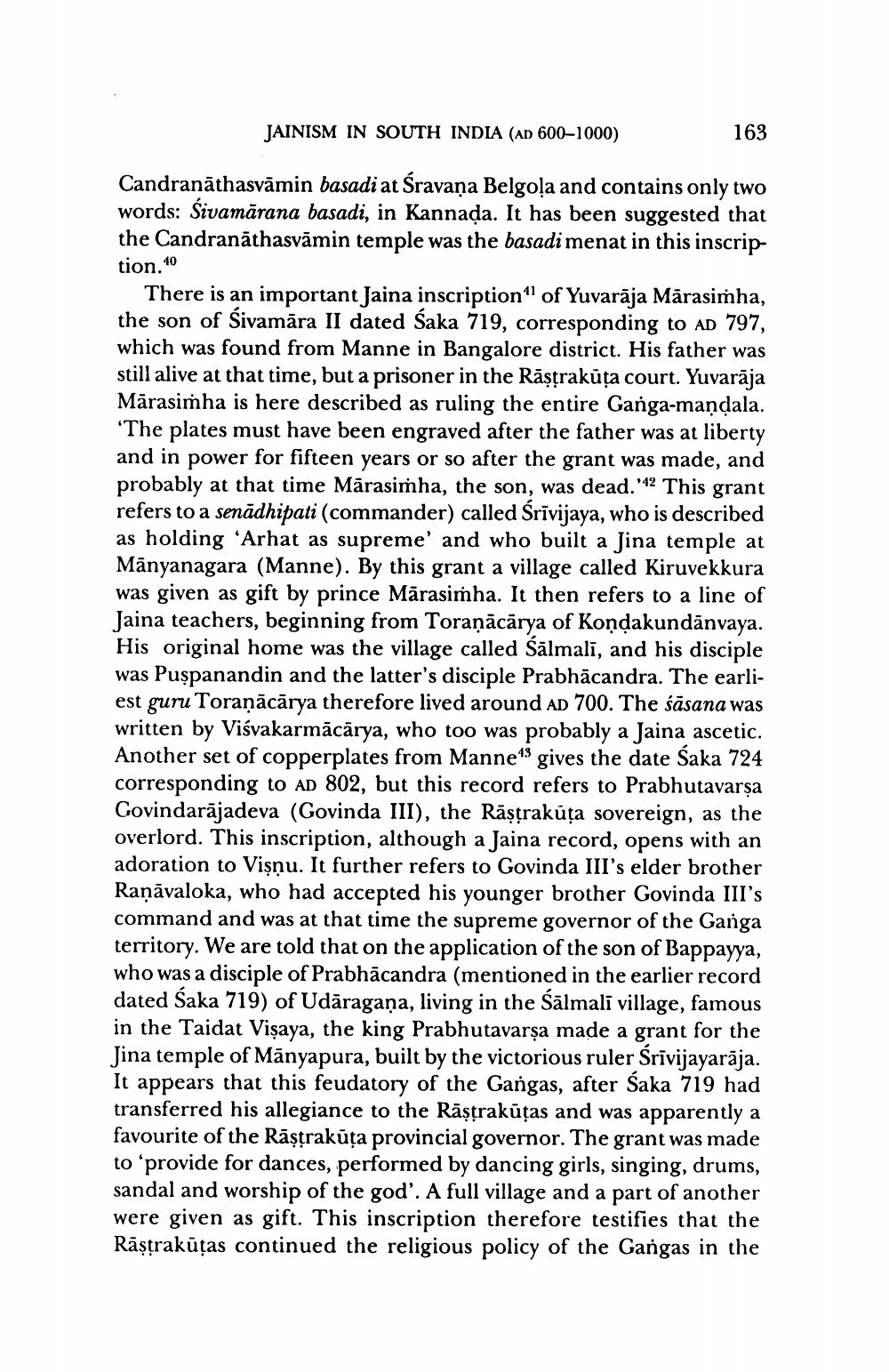________________
JAINISM IN SOUTH INDIA (AD 600-1000)
163
Candranāthasvāmin basadi at Śravaņa Belgoļa and contains only two words: Šivamārana basadi, in Kannada. It has been suggested that the Candranāthasvāmin temple was the basadi menat in this inscription. 10
There is an important Jaina inscription" of Yuvarāja Mārasimha, the son of Sivamāra II dated Saka 719, corresponding to ad 797, which was found from Manne in Bangalore district. His father was still alive at that time, but a prisoner in the Răstrakūta court. Yuvarā Mārasimha is here described as ruling the entire Ganga-mandala. 'The plates must have been engraved after the father was at liberty and in power for fifteen years or so after the grant was made, and probably at that time Mārasimha, the son, was dead.'12 This grant refers to a senādhipati (commander) called Śrīvijaya, who is described as holding Arhat as supreme' and who built a Jina temple at Mānyanagara (Manne). By this grant a village called Kiruvekkura was given as gift by prince Mārasimha. It then refers to a line of Jaina teachers, beginning from Toraņācārya of Kondakundānvaya. His original home was the village called śālmali, and his disciple was Puspanandin and the latter's disciple Prabhācandra. The earliest guru Toranācārya therefore lived around AD 700. The śäsana was written by Viśvakarmācārya, who too was probably a Jaina ascetic. Another set of copperplates from Manne" gives the date Śaka 724 corresponding to AD 802, but this record refers to Prabhutavarșa Govindarājadeva (Govinda III), the Rästrakūta sovereign, as the overlord. This inscription, although a Jaina record, opens with an adoration to Vişnu. It further refers to Govinda III's elder brother Raņāvaloka, who had accepted his younger brother Govinda III's command and was at that time the supreme governor of the Ganga territory. We are told that on the application of the son of Bappayya, who was a disciple of Prabhācandra (mentioned in the earlier record dated Saka 719) of Udāragana, living in the Sālmali village, famous in the Taidat Visaya, the king Prabhutavarşa made a grant for the Jina temple of Mānyapura, built by the victorious ruler Srivijayarāja. It appears that this feudatory of the Gangas, after Saka 719 had transferred his allegiance to the Rāstrakūțas and was apparently a favourite of the Rāșțrakūta provincial governor. The grant was made to provide for dances, performed by dancing girls, singing, drums, sandal and worship of the god'. A full village and a part of another were given as gift. This inscription therefore testifies that the Rāșțrakūtas continued the religious policy of the Gangas in the




